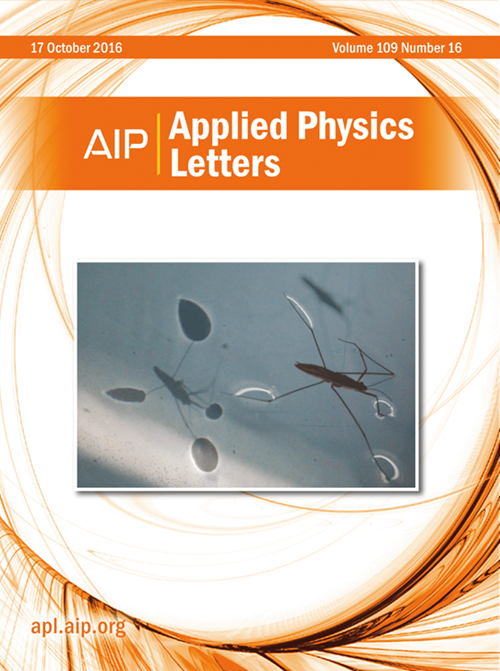Enhanced rectification behavior and electrical properties of ZnO:Cu/ZnO heterojunctions via laser-induced doping and annealing treatments
IF 3.5
2区 物理与天体物理
Q2 PHYSICS, APPLIED
引用次数: 0
Abstract
Cu-doped ZnO:Cu/ZnO heterojunctions were fabricated via a three-step laser-induced doping technique. This study systematically investigated the electrical properties, microstructure, elemental valence states, and energy-band alignment of these heterojunctions through multiple analytical techniques. Current–voltage measurements revealed an asymmetric, nonlinear behavior due to the depletion region at the ZnO:Cu/ZnO interface, with annealing further enhancing electrical performance by yielding a lower turn-on voltage of 0.3 V, an increased rectification ratio of 81.1, and a reduced ideality factor of 6.69. Band structure analysis showed that both the conduction band offset and valence band offset at the ZnO:Cu/ZnO interface increase, indicating a higher barrier height, resulting in more pronounced rectification behavior. X-ray diffraction showed that the laser-treated samples have polycrystalline structures, and annealing improved the crystallinity, thereby enhancing the conductivity. Furthermore, secondary ion mass spectroscopy confirmed the deep implantation of high concentrations of Cu ions into ZnO. Depth-profiling x-ray photoelectron spectra revealed the co-presence of Cu+ and Cu2+, both of which contribute to the p-type conductivity. These findings offer valuable insights for optimizing ZnO heterojunctions in applications such as light-emitting diodes and laser diodes with a high level of efficiency and low turn-on voltage.求助全文
约1分钟内获得全文
求助全文
来源期刊

Applied Physics Letters
物理-物理:应用
CiteScore
6.40
自引率
10.00%
发文量
1821
审稿时长
1.6 months
期刊介绍:
Applied Physics Letters (APL) features concise, up-to-date reports on significant new findings in applied physics. Emphasizing rapid dissemination of key data and new physical insights, APL offers prompt publication of new experimental and theoretical papers reporting applications of physics phenomena to all branches of science, engineering, and modern technology.
In addition to regular articles, the journal also publishes invited Fast Track, Perspectives, and in-depth Editorials which report on cutting-edge areas in applied physics.
APL Perspectives are forward-looking invited letters which highlight recent developments or discoveries. Emphasis is placed on very recent developments, potentially disruptive technologies, open questions and possible solutions. They also include a mini-roadmap detailing where the community should direct efforts in order for the phenomena to be viable for application and the challenges associated with meeting that performance threshold. Perspectives are characterized by personal viewpoints and opinions of recognized experts in the field.
Fast Track articles are invited original research articles that report results that are particularly novel and important or provide a significant advancement in an emerging field. Because of the urgency and scientific importance of the work, the peer review process is accelerated. If, during the review process, it becomes apparent that the paper does not meet the Fast Track criterion, it is returned to a normal track.
 求助内容:
求助内容: 应助结果提醒方式:
应助结果提醒方式:


